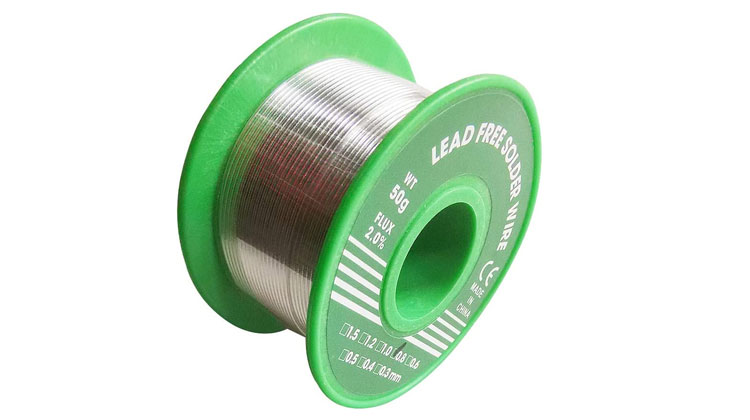There are several ways to tell if solder has lead, including checking the label, consulting a safety data sheet (SDS), or using a lead testing kit. In general, it's important to use lead-free solder whenever possible to avoid the health risks associated with lead exposure.
One way to tell if solder has lead in it is to check the label. Most solders are labeled with their composition, including the types and percentages of the metals they contain. If the label indicates that the solder contains lead, it has lead. However, it's important to note that not all solders are labeled, and not all labels are accurate, so this method may not always be reliable.

Another way to tell if solder has lead is to consult a safety data sheet (SDS). An SDS is a document that provides detailed information about the hazards, composition, and safe handling of a chemical or other product. Most solders are required to have an SDS, and the SDS for a particular solder will indicate whether or not it contains lead. However, it's important to note that not all solders have an SDS, and not all SDSs are complete or accurate, so this method may not always be reliable.
A third way to tell if solder has lead is to use a lead testing kit. A lead testing kit is a device designed to detect the presence of lead in a sample of material, such as solder. Most lead testing kits are simple to use and only require a small amount of solder to be tested. By using a lead testing kit, you can determine definitively whether or not the solder contains lead.
In conclusion, there are several ways to tell if solder has lead, including checking the label, consulting a safety data sheet (SDS), or using a lead testing kit. In general, it's important to use lead-free solder whenever possible to avoid the health risks associated with lead exposure. Lead is a toxic metal that can cause various health problems, including neurological damage, reproductive problems, and cancer. By avoiding solder that contains lead, you can help to protect yourself and others from the hazards of lead exposure.
In addition to the methods mentioned above, there are a few other factors to consider when deciding whether or not a particular solder contains lead.
One of these factors is the age of the solder. Solder that was made before the mid-1990s is much more likely to contain lead than a solder that was made more recently. This is because the regulations governing the use of lead in solder have changed over time, and many solders made before the mid-1990s were made using lead-based alloys. If you are using older solder, it's particularly important to check the label, consult the SDS, or use a lead testing kit to determine whether or not it contains lead.
Another factor to consider is the type of solder being used. Some types of solder, such as lead-free solder, are specifically designed to be free of lead. If you are using one of these types of solder, it's highly unlikely that it contains lead. However, if you are using a different type of solder, such as tin-lead solder, it's much more likely to contain lead, and it's important to check the label, consult the SDS, or use a lead testing kit to determine whether or not it contains lead.
Finally, it's important to consider the potential risks and benefits of using solder that contains lead. As mentioned above, lead is a toxic metal that can cause a variety of health problems, and it's important to avoid using solder that contains lead whenever possible. However, in some cases, using solder that contains lead may be necessary or desirable. For example, if you are working on an older electronics project or using a soldering process that requires lead-based solder, using a solder that contains lead may be the only option. In these cases, it's important to carefully weigh the potential risks and benefits and to take appropriate precautions to reduce the risks of lead exposure.
In summary, there are several ways to tell if solder has lead in it, including checking the label, consulting a safety data sheet (SDS), or using a lead testing kit. In general, it's important to use lead-free solder whenever possible to avoid the health risks associated with lead exposure. However, in some cases, using solder that contains lead may be necessary or desirable, and it's important to carefully weigh the potential risks and benefits and to take appropriate precautions to reduce the risks of lead exposure.
Contact: Mr. Li
Phone: (0086) 138 24254 321
E-mail: atetool@atetool.com.cn
Add: 5F, 1-2# Building, Tongfuyu Industrial Zone, Aiqun Rd, Shiyan Subdistrict, Bao'an, Shenzhen, 518108, China